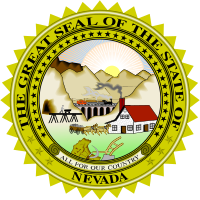
Photo from wikipedia
The 2016 presidential nominating process presented the American public with an interesting and tumultuous set of contests. Despite the unique nature of both the Democratic and Republican contests, the candidates… Click to show full abstract
The 2016 presidential nominating process presented the American public with an interesting and tumultuous set of contests. Despite the unique nature of both the Democratic and Republican contests, the candidates stuck to the usual campaign activities to help influence voters. However, one of these campaign tactics, campaign visits, has been vastly understudied. Using a uniquely compiled dataset and a hierarchical linear model, I am able to test how campaign effects, including visits, as well as an individual’s predispositions impacted vote choice in the 2016 presidential nominating contests. The results demonstrate that the 2016 presidential nominating contests were decided based on a combination of both campaign activities and individual-level predictors.
Journal Title: Journal of Political Marketing
Year Published: 2019
Link to full text (if available)
Share on Social Media: Sign Up to like & get
recommendations!